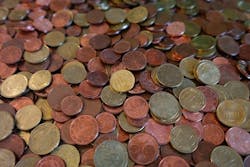Nanofiltration Membranes Cleans Industrial Wastewater
ZwitterCo, a Boston-based startup, is using nanofiltration membranes to clean out oil and grease contaminated water.
According to BostInno, the membranes work similar to a coin sorter, except they provide separation for contaminants in wastewater.
Alex Rappaport, co-founder and CEO of ZwitterCo, said companies that have a lot of wastewater will usually put the water in large tanks and truck them away to facilities, or anaerobic digesters, because they cannot put the contaminated water down the drain.
“The cost to truck away oily, greasy water is 20 to 50 times more expensive than if you were to just put that down the drain and pay the traditional municipal sewer rates,” Rappaport said.
Companies that put contaminated water down the drain could be hit with fines, because that water could lead to fatbergs, which cost cities millions of dollars, Rappaport said, according to BostInno.
“We reduce the amount of trucking that these groups have to do because we can do further refinement of the wastewater. So it goes into a big tank and then rather than going into a truck, it goes into our membrane systems,” Rappaport said to BostInno.
Rappaport said the membrane filter allows companies to clean 80 to 90% of the wastewater, which could be a hundred of thousands of gallons a day. According to BostInno, the company can now put the water down the drain, which can cost pennies per gallon, and only truck away 10 to 20% of the water.
When Rappaport was completing his Masters, he came across this membrane technology. According to BostInno, the membrane, which looks like a sheet of paper with microscopic pores, that ZwitterCo commercialized is created by Dr. Ayse Asatekin, ZwitterCo senior technical adviser and an associate professor of chemical engineering at Tufts University.
The membrane combats fouling, which is clogging with contaminants that block the membrane pores, Rappaport said. The membrane also is easily cleanable. In addition, the membrane has a uniform layer that helps with precise separation. It is also tolerant of chlorine and harsh cleaning chemicals.
“That’s kind of the secret sauce. [Dr. Asatekin] made a membrane that is able to perform in very challenging wastewaters at very low operating costs,” Rappaport said to BostInno.
The plan is to have systems in the field this year, according to BostInno. Every the company is working on right now is around product design and scaling.
“We have customers that are ready to sign contracts. A bunch of things are lining up all at once,” Rappaport said.
